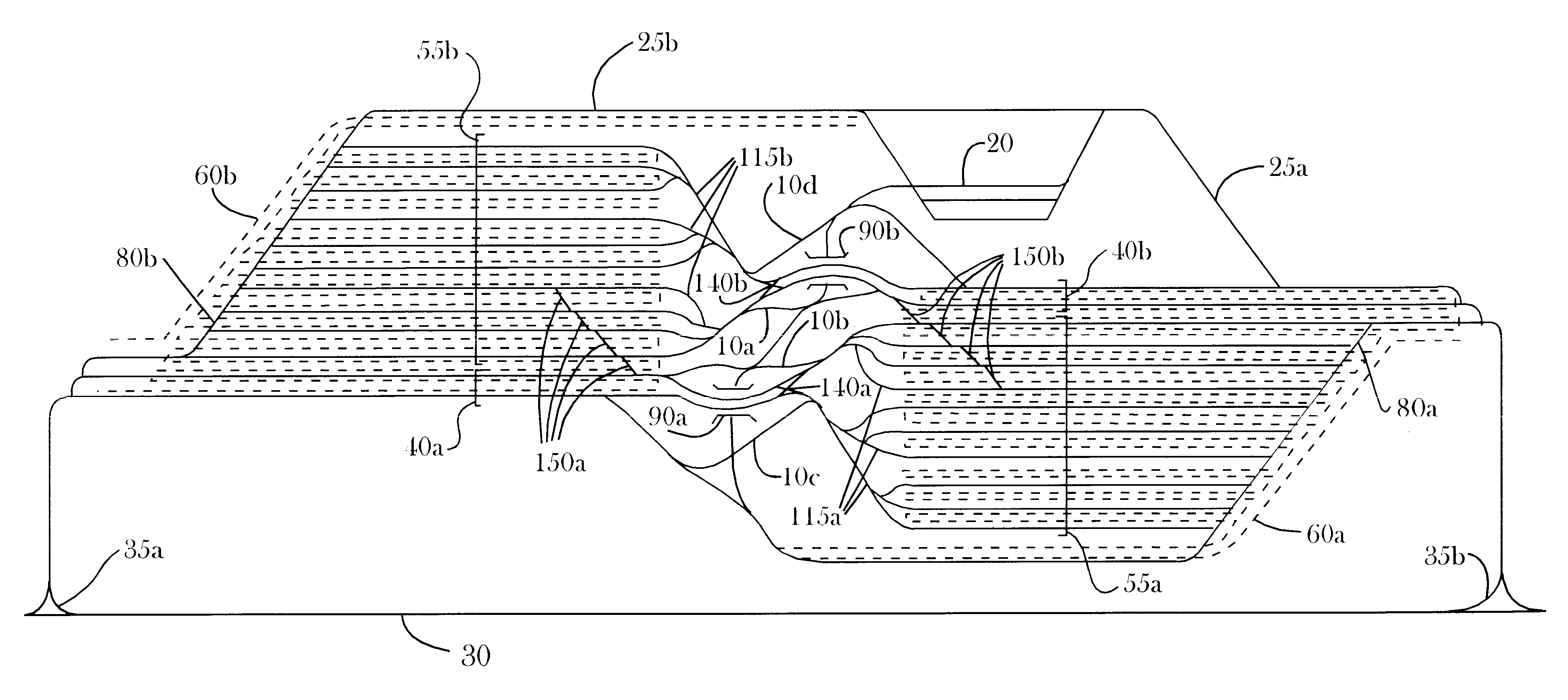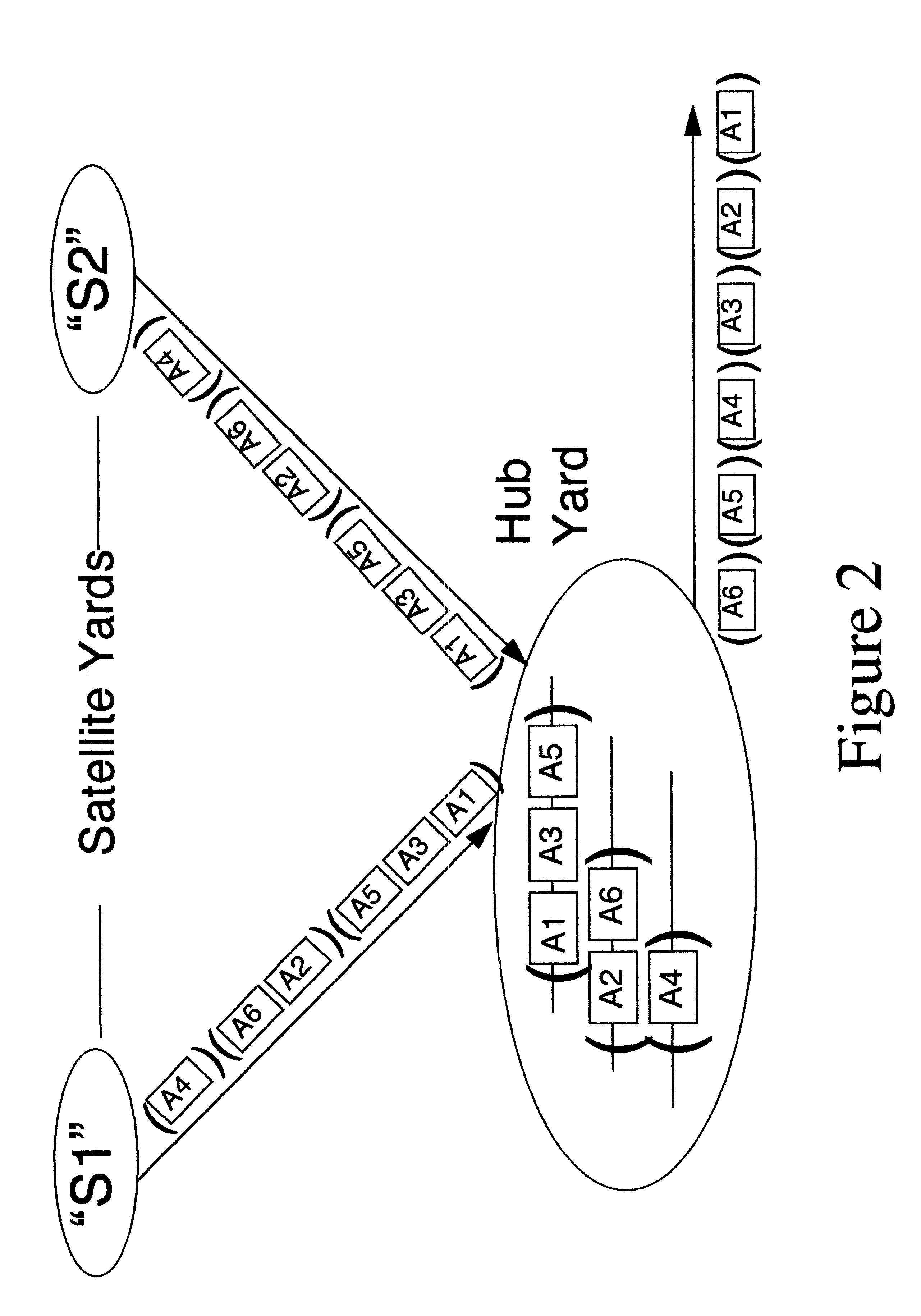High capacity multiple-stage railway switching yard
a switching yard and high-capacity technology, applied in railway stations, railway hauling devices, ways, etc., can solve the problems of limiting the maximum throughput of the yard, single-stage yards often cannot create as many blocks as are needed, and no "second chance" to adjust the arrangement of cars
- Summary
- Abstract
- Description
- Claims
- Application Information
AI Technical Summary
Problems solved by technology
Method used
Image
Examples
embodiment
FIG. 3--Alternative Embodiment
An alternative embodiment consists of the yard of FIG. 3, operated by the method of partial preblocking of cars to bypass the first stage sort. In FIG. 3, a double hump lead with scizzors crossovers 140 has been added to the yard of FIG. 10 in the parent application, to allow parallel humping to proceed concurrently during the second stage sort. If adequate preblocking support can be provided, the yard of FIG. 3 could handle as much traffic as a large conventional single-stage yard, without needing the second sub-yard as shown in FIG. 1.
The best yard design for any given locale depends on the number of cars needing to be switched, land availability and cost, and the degree to which surrounding yards are able to provide preblocking support. However as a rule, the simplest design capable of providing the required capacity should be chosen. The more complicated design of FIG. 1 should be introduced only when the simpler yard of FIG. 3 is unable to handle t...
PUM
 Login to View More
Login to View More Abstract
Description
Claims
Application Information
 Login to View More
Login to View More - R&D
- Intellectual Property
- Life Sciences
- Materials
- Tech Scout
- Unparalleled Data Quality
- Higher Quality Content
- 60% Fewer Hallucinations
Browse by: Latest US Patents, China's latest patents, Technical Efficacy Thesaurus, Application Domain, Technology Topic, Popular Technical Reports.
© 2025 PatSnap. All rights reserved.Legal|Privacy policy|Modern Slavery Act Transparency Statement|Sitemap|About US| Contact US: help@patsnap.com



